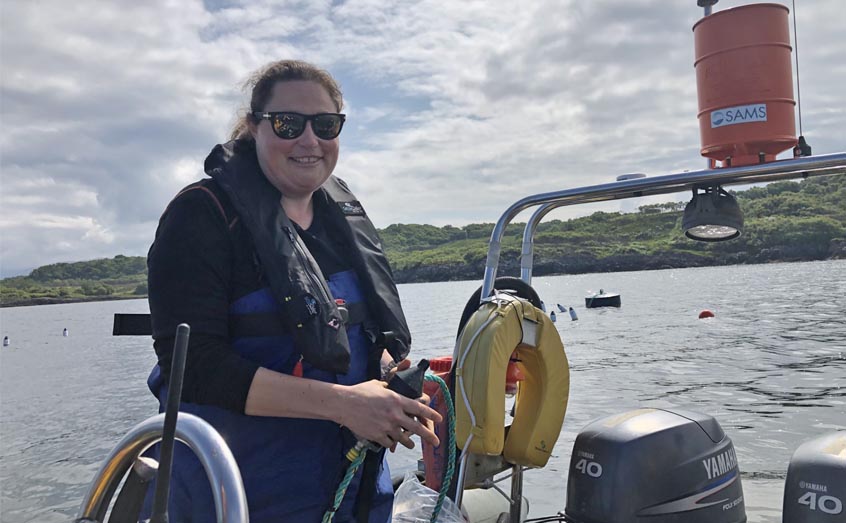SAMS news room
Scientists in first global underwater sound experiment

Scientists from SAMS are today (World Ocean Day) joining marine scientists from across the world in the first ever global experiment to record the underwater sounds of animals in our ocean, lakes and rivers.
The World Ocean Passive Acoustic Monitoring (WOPAM) project will see around 150 researchers from 92 research institutes in 32 countries deploy underwater recording devices and use a technique known as passive acoustic monitoring to record biological sounds underwater.
The aim is to gain a better understanding of the distribution of sound levels and types of sound in those areas around the world, that occur at the same time. The recordings will also identify any manmade sounds, revealing our potential impact on the underwater environment.
The SAMS deployment, part of the institute’s #WhaleTalk campaign, has been co-ordinated by SAMS marine mammals expert Dr Nienke van Geel, who deployed a hydrophone (underwater microphone) near to the SAMS seaweed farm off the isle of Lismore. The SAMS team is particularly interested in marine mammal sounds around the Scottish coast.
Dr van Geel said: “Passive acoustic monitoring can be our eyes in the deep ocean. By listening to the various marine mammal sounds, and detecting how regular and loud they are, we can build up an underwater image of what is present.
“Ideally, our recorders are in the water for a long period of time, so that we can make comparisons, but the WOPAM project is a snapshot from all corners of the globe, which I believe will be extremely informative.
“Marine mammals are some of the best-loved creatures in our ocean, yet there is much to learn about their migrations, feeding behaviours and communication. We also need to understand the threats they face from factors such as climate change, underwater noise, and entanglement in fishing gear. Science can provide advice to policy makers in these sectors to secure the conservation of these species.”
Passive acoustic monitoring has already benefited from advancements in artificial intelligence. Algorithms can be developed to recognise marine mammal frequencies in a large data set, increasing the speed at which scientists can identify the presence of a particular species.
The WOPAM project is expected to include 300 sites and organisers hope this shared data can help to progress passive acoustic monitoring research around the world. It has been co-ordinated through the Global Library of Underwater Biological Sounds (GLUBS), the world’s first library of underwater biological sounds to monitor changing marine life.
Project co-leader Dr Miles Parsons from the Australian Institute of Marine Science (AIMS) said: “All of these recordings will be shared as part of a collaborative study and stored in the GLUBS.
“The collection will help us to compare sounds in various parts of the world, including in shipping channels and quiet bays.
“The dataset will also build our knowledge of interesting and unusual unidentified sounds – these are a major component of underwater soundscapes.”
The SAMS involvement in the WOPAM project coincides with the launch this Ocean Week of the SAMS #WhaleTalk campaign (https://www.sams.ac.uk/whaletalk/), which will highlight the importance of long-term monitoring of marine mammals to better understand their populations, health and migrations.
More information on WOPAM can be found here: https://www.iqoe.org/articles/world-oceans-passive-acoustic-monitoring-day-wopam-day
